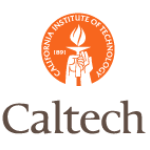- 産業:
- Number of terms: 3726
- Number of blossaries: 0
- Company Profile:
The direction in the sky away from which the Sun seems to be moving (at a speed of 19.4 km s-1) relative to general field stars in the Galaxy.
Industry:Astronomy
The weak form of the anthropic principle states that life can exist only during a brief period of the history of our universe. The strong form of the principle states that out of all possible values for the fundamental constants of nature and the initial conditions of the universe, only a small fraction could allow life to form at all, at anytime. (See boundary conditions; fundamental constants of nature..)
Industry:Astronomy
The projection of human attributes onto nonhuman entities such as animals, the planets, or the universe as a whole.
Industry:Astronomy
1) The direction of the sky opposite to that of the galactic center.
2) The point in the galactic plane that lies directly opposite the galactic center. Here we gaze toward the edge of the Galactic disk. The nearest bright star to the anticenter is El Nath, in the constellation Taurus.
Industry:Astronomy
metalloid element with three forms. The metallic form is the more stable and is bright, silvery, hard and brittle
Industry:Astronomy
The antiparticle of a neutron. A neutron and antineutron both have the same mass and zero electric charge, but can be differentiated by their interactions: a neutron and an antineutron can annihilate into gamma rays, while two neutrons cannot.
Industry:Astronomy
1) An elementary particle of opposite charge but otherwise identical to its partner. Most of the observable universe consists of particles and matter, as opposed to antiparticles and antimatter.
2) Atomic particles that have the same mass as, but opposite charge and orbital direction to, an ordinary particle. Thus, instead of negatively charged electrons, atoms of antimatter have positrons. A quantity of antimatter coming into contact with matter would "cancel out" - annihilate, with total conversion of mass to energy - an exact proportion of matter corresponding to the original quantity of antimatter, provided that the elements in the matter also corresponded with the "elements" in the antimatter, i.e., that the atoms were equivalent but opposite.
3) For every known type of particle, there exists an antiparticle with exactly the same mass, but with the opposite electric charge. When a particle and its antiparticle come together, they can always annihilate to form gamma rays. The antiparticle of an electrically neutral particle is sometimes the same as the original particle (e.g., photons) and sometimes it is distinct (e.g., neutrons.)
4) Particles predicted by combining the theories of special relativity and quantum mechanics. For each particle, there must exist an antiparticle with the opposite charge, magnetic moment and other internal quantum numbers (e.g., lepton number, baryon number, strangeness, charm, etc.), but with the same mass, spin and lifetime. Note that certain neutral particles (such as the photon and π0) are their own antiparticles.
5) Particles with identical mass and spin as those of ordinary matter, but with opposite charge. Antimatter has been produced experimentally, but little of it is found in nature. Why this should be so is one of the questions that must be answered by any adequate theory of the early universe.
Industry:Astronomy
The antiparticle of a proton, identical in mass and spin but of opposite (negative) charge.
Industry:Astronomy
